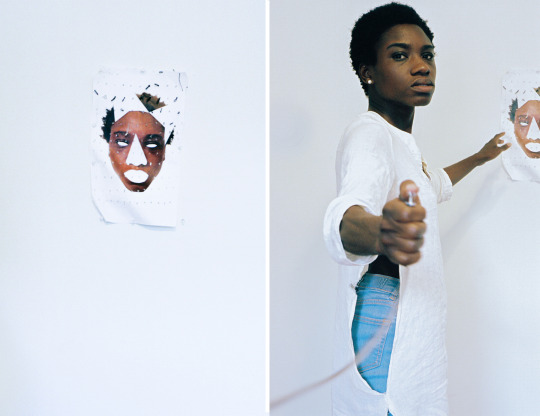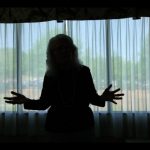Business of Art | Five First Steps for Making Your Events More Accessible
“For me, making work inclusively is a priority because I believe it makes the art better.” – Jess Thom, Touretteshero
Many barriers prevent arts lovers from experiencing the work they love, and these barriers aren’t always physical. Visual, performing, and participatory artist Jess Thom is working to change this reality, “one tic at a time.” The London-based Thom co-founded Touretteshero in 2010 as a creative response to her experience of living with Tourettes Syndrome, a neurological condition which causes involuntary movements and vocalizations.
In July of 2018, Thom participated in a Q&A on Twitter to share arts career advice for disabled* artists as part of #ArtistHotline, an artist’s professional development tweet chat that takes place on the third Wednesday of each month. You can find the whole Twitter Q&A here. As part of the chat, Thom shared recommendations for artists and artist collectives holding public events and performances to make their programs more accessible.
The best practices shared below are also relevant to cultural institutions such as NYFA. There is much work to be done, and we hope to help increase awareness and encourage proactivity around making accessibility the norm through Thom’s recommendations.
Recognize that Access is an Asset
As Thom wrote in The Stage in 2016, “Disability isn’t a niche issue. Almost one in five people in the UK [and in the United States] identify as disabled. It’s time to think of access as an asset – if you make your work accessible, you open it up to new audiences.” When asked by an #ArtistHotline participant on Twitter whether disabled artists should turn down an event because the space is not accessible, Thom offered: “I wouldn’t tell another artist what to do in regard to this, but for me making work inclusively is a priority because I believe it makes the art better.”
What opportunities are missed by unintentionally or knowingly excluding a large segment of the population? For one, opportunities to innovate with your work, ensuring it resonates with a greater number of individuals, with a wide range of lived experience. This could be true in the work itself or in its presentation. Thom, for example, has been inventive in the kinds of spaces she’s used, such as hospital schools in the United Kingdom, playgrounds, and other DIY spaces which can be more accessible than traditional spaces like galleries and theaters. Other artists utilize online spaces. “Working in different contexts,” Thom said, “means we’ve built our experience of making access work in different ways.” This is just one of the many ways an artist’s work is strengthened when it is more accessible.
Broaden Your Understanding of “Disability”
In the minds of many people, “disability” refers to a visible physical impairment. But there are many “invisible disabilities,” defined as a “physical, mental, or neurological condition that limits a person’s movements, senses, or activities that is invisible to the onlooker.” These can include fatigue, chronic pain, and hearing and vision impairments that are not apparent to others. It’s also helpful to remember that different impairments can intersect; Thom, for example, is a wheelchair user with tics who experiences chronic pain. A wheelchair accessible event is still not accessible to many.
Think Beyond Your Lived Experience
“If you are able to follow the ‘etiquette’ of creative spaces you might not think about people who can’t,” notes Thom. “Similarly if you can sit for an hour without pain you might not think about those who need to lie down or stand up.” Take time to assess how the format, staging, and physical layout of your event may be limiting. As Thom observes: “In my experience, lots of exclusion happens accidentally because people don’t see the barriers that others might experience. By thinking about difference at the start of a process we can make less disabling spaces, systems, and attitudes.” Make your event stronger by incorporating this thought process from the beginning.
Embrace the “Relaxed” Mindset
As you evaluate your event’s accessibility during the early planning stages, ask yourself questions such as: “Are audience members expected to sit still and quietly for several hours in chairs?” For many, these expectations would be uncomfortable to the point of making it impossible to attend. You may wish to provide other spaces to sit or lie down, and can make an announcement before an event begins that audience members are free to move around and make noise. In the theater world, this approach is known as the “Relaxed Performance Mindset.” These kinds of performances “take a laid-back approach to noises or movement coming from the audience. They give everyone permission to relax and respond naturally. Many people feel that relaxed performances offer a more dynamic theatrical experience, which benefits everyone.”
Educate Yourself, Always
More and more resources and perspectives are now available to help cultural practitioners create more accessible programming. Thom recommends Shape Arts, a disability-led arts organization in the UK, for resources on accessible events and accessible marketing, as well as Unlimited, an arts commissioning program that enables new work by disabled artists and shares resources such as a resource pack for the performing arts called Demystifying Access.
In the United States, the Kennedy Center’s Leadership Exchange in Arts and Disability (LEAD®) offers tipsheets, videos, webinars, and more on a range of accessibility topics, and the American Alliance of Museums recently shared “Seven Tips for Greater Accessibility at Events.”
You may feel there’s a steep learning curve for you in creating accessible events. If you’re worried about missteps as you learn more, remember: it’s better to begin and make progress, rather than allowing fear or anxiety to prevent you from acting at all.
Note*: Thom utilizes identity-first language, as in “Disabled,” rather than person-first language, as in “Person with a Disability.” Many proponents of the identity-first model base their preference in the social model. As explained by Shape Arts: “The Social Model holds that a person isn’t ‘disabled’ because of their impairment, health condition, or the ways in which they may differ from what is commonly considered the medical ‘norm’; rather it is the physical and attitudinal barriers in society – prejudice, lack of access adjustments and systemic exclusion – that disable people.”
– Mirielle Clifford, Program Officer, Online Resources
To read more articles on arts career topics, check out NYFA’s Business of Art Directory, and learn more about NYFA’s current physical accessibility initiative for events held at its Brooklyn office.
Inspired by the NYFA Source Hotline, #ArtistHotline is an initiative dedicated to creating an ongoing online conversation around the professional side of artistic practice. #ArtistHotline occurs on the third Wednesday of each month on Twitter. Our goal is to help artists discover the resources needed, online and off, to develop sustainable careers.
This initiative is supported by the Emily Hall Tremaine Foundation.
Image: Christie Neptune (Fellow in Interdisciplinary Work ‘18), Pulling At My Labels, 2016, video still from single channel video





